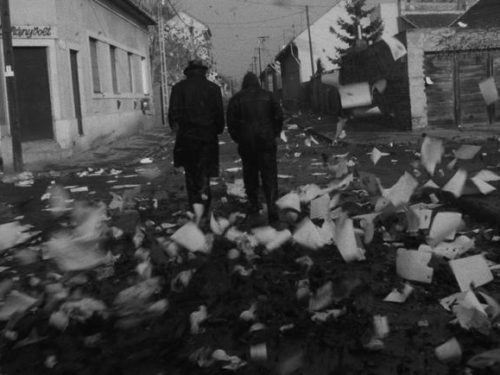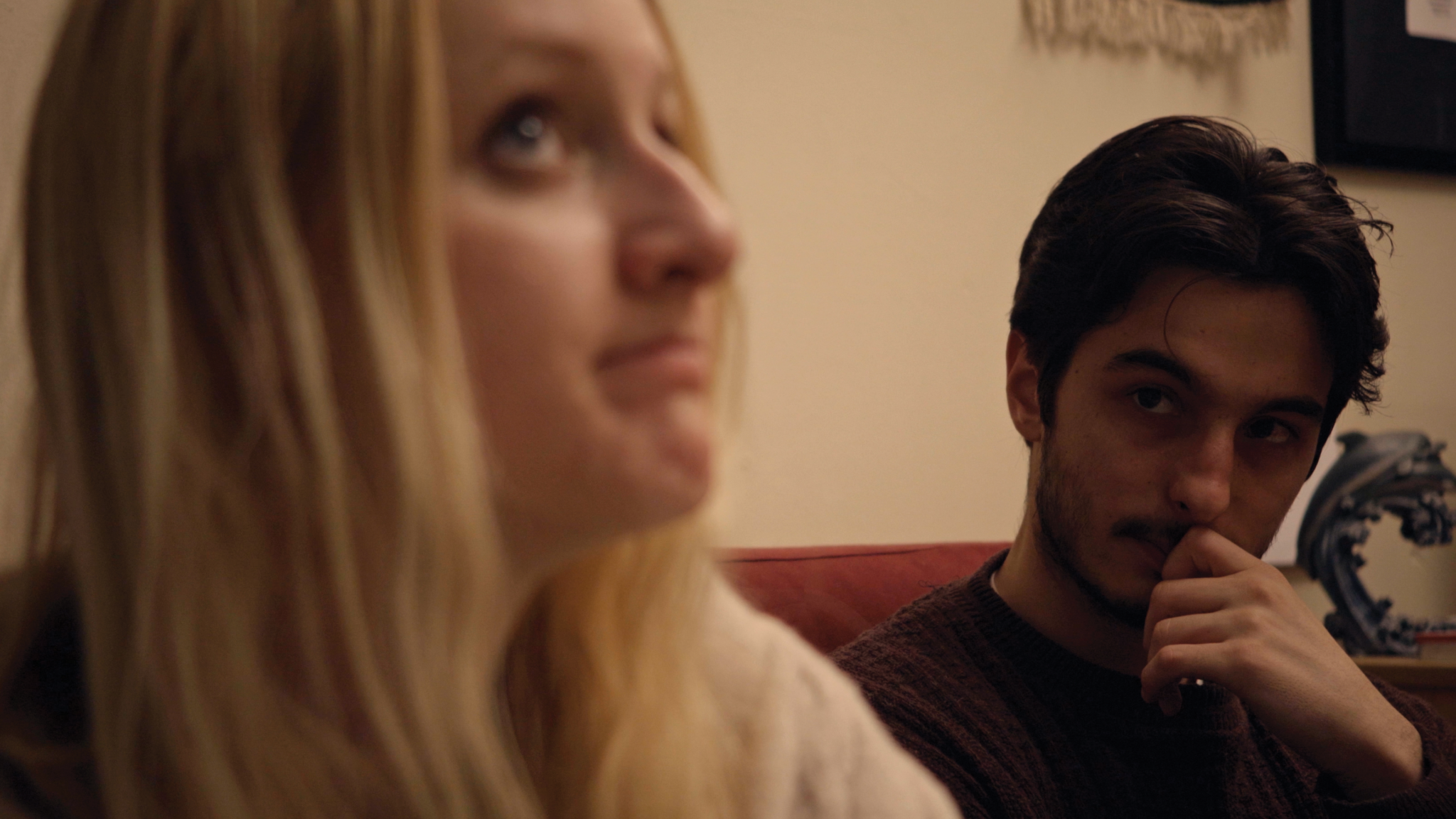Now in its fourth year, Prismatic Ground is an annual highlight of the festival calendar. Bennett Glace reflects on the event’s importance amid global upheaval and explores some standouts from this year’s program as it kicks off online and across several New York venues
The debut of Prismatic Ground in April of 2021 was the rare bit of good pandemic-era news. Founded by Inney Prakash, a Maysles Documentary Center programmer, the first iteration of the film festival not only disrupted the monotony of lockdown but represented an uncommonly democratic version of the festival experience. Instead of presenting a dramatically pared-down, geo-locked selection, Prakash practiced politically minded curation and followed through on his passionate rejection of borders. Film lovers everywhere were free to stream Prismatic Ground’s various “waves” of experimental shorts and features from Day 1. What’s more, the diverse program reflected Prakash’s commitment to resisting simple binaries in its many juxtapositions: established directors played alongside emerging artists, fact and fiction were continually blended, artists fearlessly mixed materials and filmmaking techniques. Though in-person screenings now far outnumber digital screeners, Prismatic Ground and its sprawling program retain their inviting sense of possibility. Screenings are scheduled so as not to overlap, and Prakash contends that viewers can put any one film or program of films into provocative conversation with any other.
With over 90 works, this year’s Prismatic Ground features the largest and most adventurous program yet. In addition to the 16 streamable films available online as “wave ♾️,” New York venues including Light Industry, Anthology Film Archives, and the Museum of the Moving Image will host four waves of screenings, readings, and live performances through Sunday night. In addition to a complete retrospective of Antoinetta Angelidi films and a tribute to Aldo Tambellini, attendees can experience a night of sculptural projections by arc, a poetry reading from Sky Hopinka, a restored/recaptured Raúl Ruiz documentary, and a live 16mm abstraction from Tomonari Nishikawa.
In 2024, the festival serves just as vital a purpose as in its debut year, opening amid another especially fraught period for film exhibition and the world as a whole. To put it mildly, the teams behind many of the world’s premier festivals have failed to meet our current moment. Despite continually touting the value of dialogue, listening, and a diversity of perspectives, they have favored one-sided censorship and proud complicity. Prakash’s recent resignation from the HotDocs jury shows his unwillingness to put sponsor dollars over political convictions. Films from Palestinian artists abound and offer many of the most potent articulations of this year’s recurring themes at Prismatic Ground, including resistance to the manipulations of colonial narratives, the establishment of personal and national identities against the headwinds of hegemonic forces, and the simultaneously restorative and destructive powers of myth.
The 2024 festival opened at MoMI on Wednesday with a restoration of Michel Khleifi’s Fertile Memory (1980), regarded as the first feature made in occupied Palestine. Through stark, red opening titles, Khleifi spends less than 90 seconds setting the scene. While communicating generations of trauma, the film’s credits also implicitly refute the popular notion that the Israel-Palestine conflict is an inscrutable or even an especially complex one. Khleifi focuses primarily on two women, occasionally interviewing them from behind the camera. Farah lives with her children and grandchildren in the West Bank. Since losing her husband and her home, she has worked in an Israeli textile factory. More recently, she has stubbornly resisted her son’s efforts to negotiate an official sale for the former homestead. Sahar, a writer, lives in Nablus with her daughter while another daughter studies at university. Though she enjoys some independence, Sahar describes experiencing a kind of double-occupation and the necessity of staying on her guard as a divorced woman. “Is the isolation a sacrifice?” Khleifi asks from off camera, “No,” she responds, “it’s a necessity.”
Like today’s brutal status quo, the occupation of more than 40 years ago depended on the persistence of false narratives and insidious double-speak. Looking out over land that once belonged to his family, land his mother hasn’t seen in over 30 years, Farah’s son laments both the injustice and the absurdity. “They have called it a building and development zone,” he says, “but they have neither developed, nor built.” Farah refuses to sell, though she prays for the land’s return. Like her son, she believes, “A day will come when everyone will recover his rights,” but she won’t capitulate in the meantime by calling a seizure a sale.
Fertile Memory ultimately discourages us from dehumanizing its subjects through deification, viewing them as mere symbols. “Anything sacred is doomed to be encroached upon,” Sahar says, echoing the ways men use exaggerated reverence as a way of exerting control over women and everything else. We’re left hopeful for a day when Palestine and its citizens no longer need to serve as global symbols for resilience, when a director like Khleifi won’t need to open by asking, “Do you consider yourself a militant Palestinian woman under occupation?”

Artists from other parts of the world reflect on hijacked national identities and increasingly hostile homelands across Prismatic Ground’s program too. The second film in the festival’s first wave, Nehal Vyas’ Amma Ki Katha (2023), draws inspiration in part from the ways Hindu nationalists have perverted folklore to reclaim India’s creation myths. Vyas juxtaposes the new brand of mythology against the stories her grandmother imparted. Blending hand-cut animations, impressionistic montage, and stagebound performances, she translates the stories of the four elephants who are traditionally said to carry India on their backs and impart their knowledge to the nation’s grandmothers. “This is what they told your grandmother,” our narrator reads, before transitioning into the first of four tales about the nation’s birth.
In close-ups that obscure all but its colors, a flag ripples in the wind while a voice from an archival radio recording describes its initial unveiling. Next, a modern-day radio program takes over the soundscape with a listener’s request; she wants to hear India’s 1949 constitution read aloud. The hosts oblige over a series of scenes – most notably, a group of Muslim men kneeling in prayer. Vyas’ images lack any of the celebratory fervor we might expect from the words we hear, which promise “Equality of status and of opportunity” to all Indians. Like so many moments from across the festival, the sequence counts on us to listen out for the hypocrisies and contradictions in the narratives proffered by governments and wilfully ignorant patriots. Even a fireworks display only dampens the mood. We close on a single orange spark rising toward the top of the frame while explosions ring out. It’s less suggestive of a pyrotechnic show than of a rocket joining an ongoing barrage.
The penultimate tale, “The third elephant smelt the fire,” echoes the first’s conclusion and intensifies its sense of dread. Throughout, voices sing about the dangers of zealotry. “Look, Lord, in your name,” the singers repeat, “they are performing these deeds in your name. They fill an innocent childhood with fear and hate.” Vyas closes the tale by adding still more colors to her palette and techniques to her filmmaking repertoire. An abstract sequence, composed from what look like smears of saffron paint suggests both melting film emulsion and a nation consumed in the flames of hatred.
Family and national folklore also figure into Familiar Phantoms (2023), another dispatch from occupied Palestine. It’s perhaps the best of the festival’s numerous films that restage and reinterpret stories from their directors’ childhoods. Co-directors Larissa Sansour and Søren Lind take us through more than a century of history to chart both the factual and fantastical histories of Sansour’s family. “In Bethlehem,” Sansour says, “history plays out like an opera.” The statement portends the various surprises and fake-outs to come.
Early on, she calls memory “a master of deception” and throughout the film she shows us its many tricks. The story of Sansour’s father and aunt, for example, gets sweetened in her recollections. Her version of events sees the two Communists open a sewing shop purely as a front. It’s a headquarters where they operate in constant fear of discovery. In reality, Therese was a gifted tailor who managed the shop easily. “My memory,” Sansour remarks, “favors the narrative splendor and deprives her of these skills.”
The repeated use of split-screen compositions suggests both the impossibility of reconciling one’s preferred version of history with reality as well as the myriad fractures created by trauma and time. Nevertheless, the film generally fixes a clear eye on the past. Familiar Phantoms’ hyper-detailed digital cinematography contrasts with the warmer, analog textures of other memory-centric festival entries. We’re baking in a harsh present-day gaze rather than basking in a nostalgic glow.

Other festival highlights include the Palestinian portraits UNDR (2023), a collage film that recalls Bruce Conner, and A Stone’s Throw (2022), which also pulls from archival footage to tell its story of an exiled elder. avant seriana (2024) looks at familiar mythopoetic themes through an Algerian lens. Though the pleasures of Light, Noise, Smoke and Light, Noise, Smoke (2023) and Glitter for Girls (2023) may at first seem purely sensory, the films are by no means insignificant. The former subverts the simple childlike wonder of a fireworks display while the latter showcases a one-of-a-kind non-photographic technique, with director Federica Foglia creating emulsion from temporary tattoos. Map to the Sirens (2024) sees Demetrius Antonio Lewis uncover traces of Atlanta’s antebellum past while cataloging contemporary stories of wage slavery. Perhaps the festival’s most interesting feature, Audrey Lam’s Us and the Night (2024), proves an unusually whimsical Prismatic Ground entry. On cozy celluloid that recalls a well-loved library print, two young women repeatedly cross paths among the university stacks and indulge all the possibilities of the page. For me, no film among the festival’s vast selection packed a greater emotional wallop than As close as your voice can call (2023), which features a collage culled from children’s book illustrations and climaxes with an attempt to speak with the dead.
Prismatic Ground 2024 runs through Sunday, May 12. Check out the full program and the future is still bigger than the past, the wave of films available for online streaming.
(Split Tooth may earn a commission from purchases made through affiliate links on our site.)




